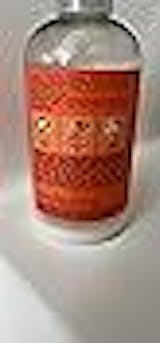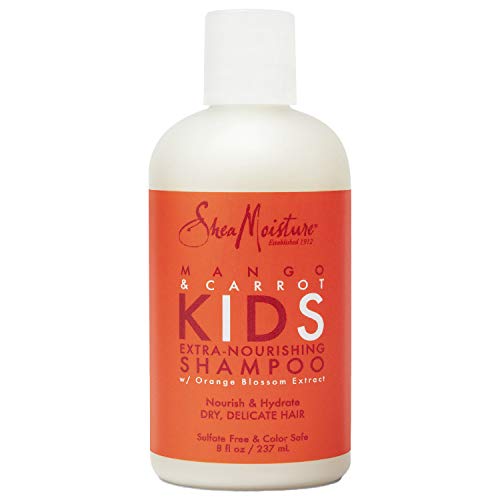

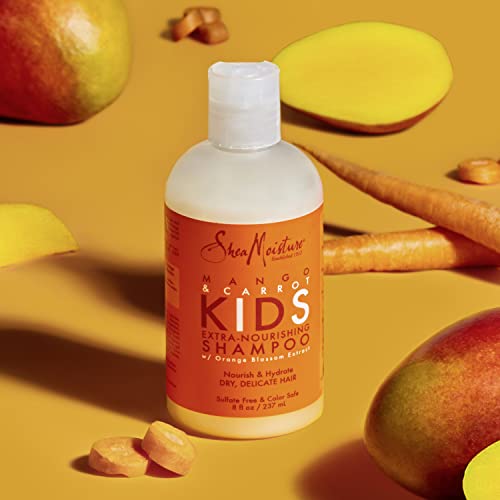
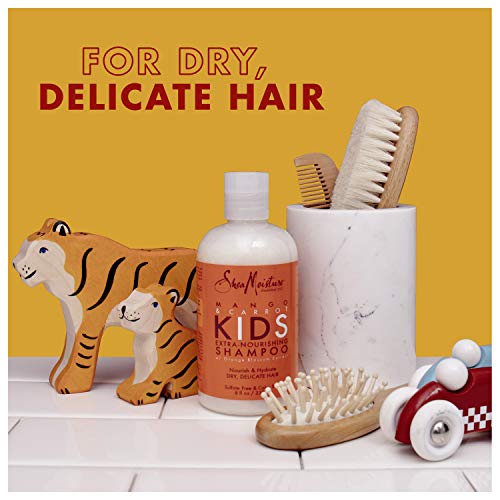
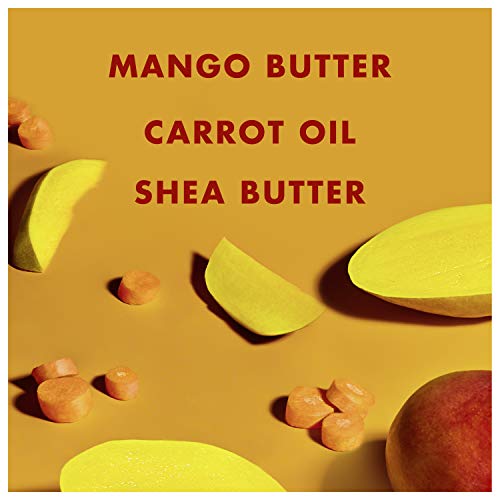
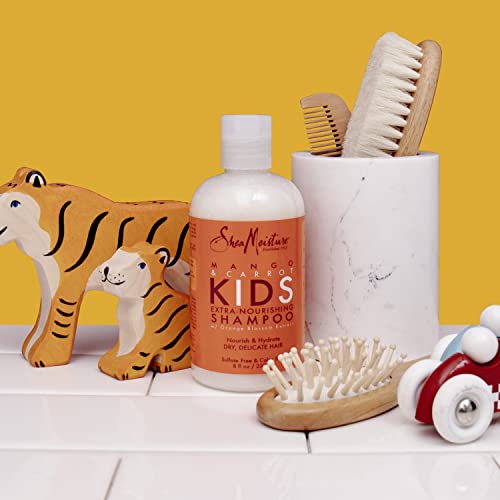
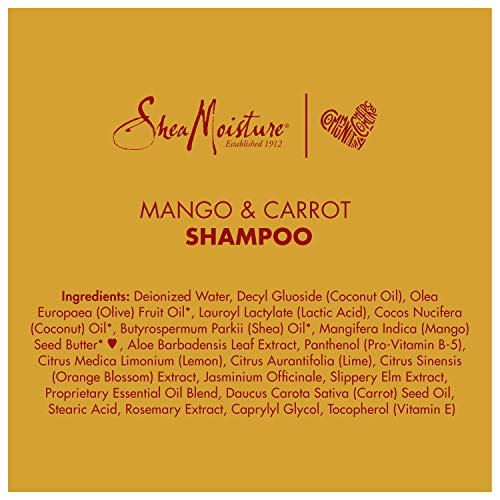
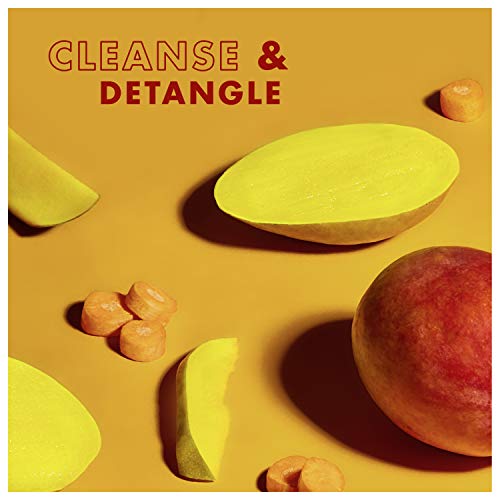
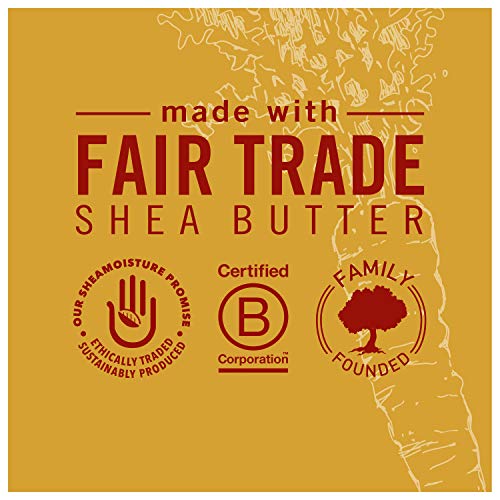


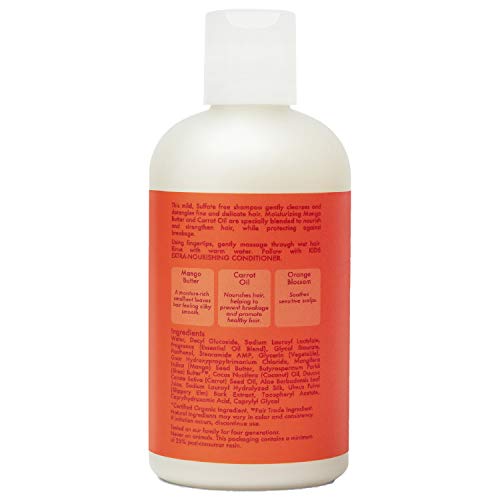
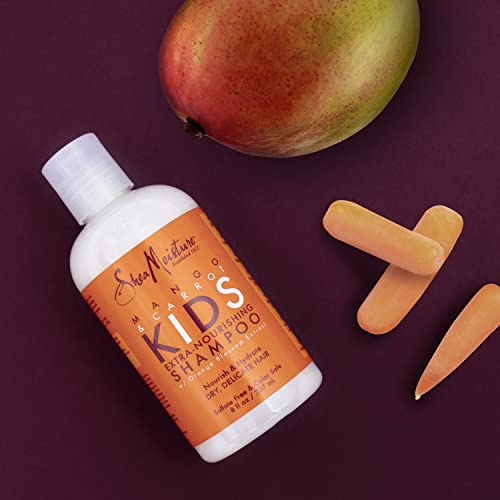
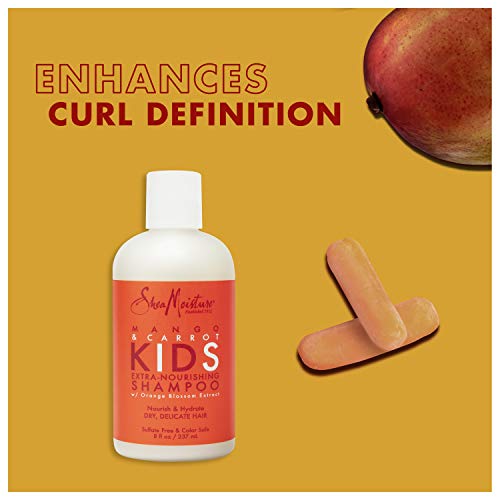
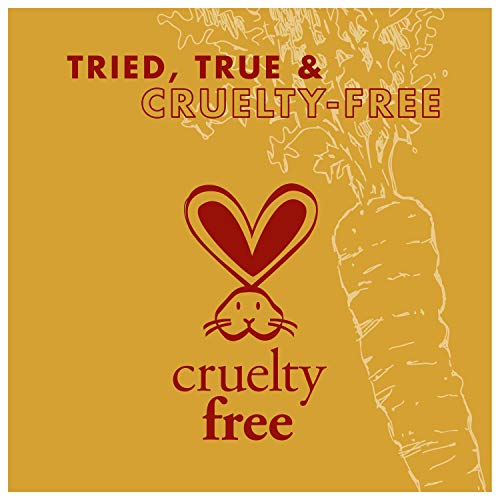

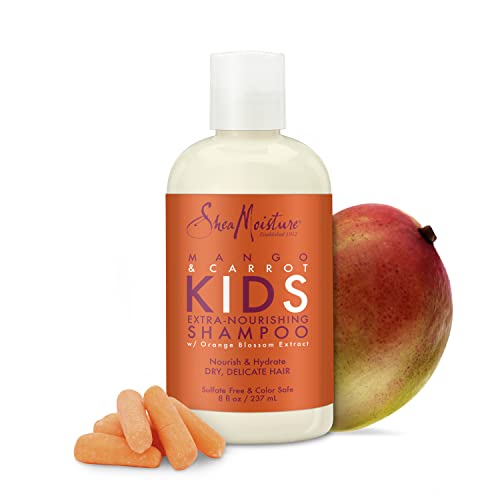
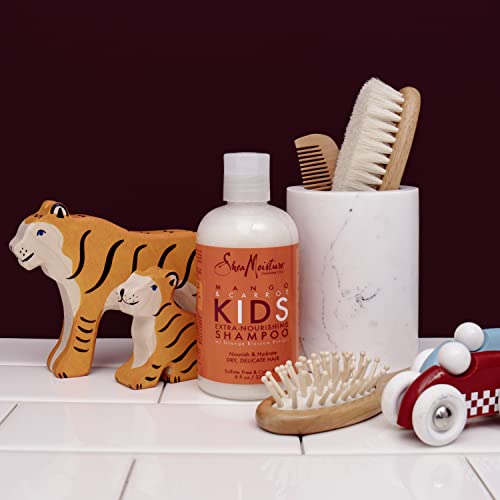
SheaMoisture Kids Shampoo & Body Wash - Nourishing Coconut Oil & Shea Butter, 8oz


Fragrance
High RiskFragrance refers to a mixture of aromatic compounds used in products to provide scent. It is commonly listed as 'fragrance' or 'parfum' on product labels and can serve various functions, including enhancing user experience and masking undesirable odors.
Sustai Insights
Fragrance offers functional benefits by improving product appeal; however, it poses significant health risks, notably a high likelihood of causing allergies and allergic contact dermatitis. Environmental risks include potential pollution and endocrine disruption, though its overall carcinogenicity is low. Regulatory bodies have noted concerns regarding its use, leading to a high-risk classification. Safe usage practices should be observed, and alternatives such as natural essential oils are recommended for those sensitive to synthetic fragrances.
Cocamidopropyl Betaine
High RiskCocamidopropyl betaine is a synthetic surfactant derived from coconut oil, commonly used in personal care products for its mild cleansing and foaming properties. It functions as a surfactant, emulsifier, and thickening agent, contributing to the texture and performance of formulations.
Sustai Insights
Cocamidopropyl betaine offers functional benefits as a gentle surfactant, enhancing product foaming and texture. However, it may pose low to moderate allergenic risks and is subject to high use restrictions due to contamination concerns. Regulatory bodies have advised on its safe levels of usage, categorizing its risk level as high overall. Users should practice caution, particularly with sensitive populations, and consider alternatives like naturally derived surfactants for safer formulations.
Triethyl Citrate
Medium RiskTriethyl citrate is a triester of ethyl alcohol and citric acid, commonly used as a solvent, plasticizer, and fragrance ingredient in cosmetic and personal care products. It functions effectively in formulations, contributing to product texture and stability.
Sustai Insights
Triethyl citrate offers functional benefits such as enhancing product texture and acting as a solvent. It is considered biodegradable and has low potential for bioaccumulation. However, it presents moderate allergenic risk and low concerns regarding carcinogenicity and reproductive toxicity. Regulatory bodies have placed some restrictions on its use in verified products. Overall, it is assessed as a medium risk ingredient, necessitating safe usage practices.
Benzoic Acid
Medium RiskBenzoic acid is a naturally occurring and synthetically produced compound commonly used as a preservative in food and cosmetic products. It helps inhibit the growth of mold, yeast, and some bacteria, thus extending shelf life and maintaining product quality.
Sustai Insights
Benzoic acid is effective as a preservative, ensuring product stability and safety. It is generally considered to have low health risks, with minimal concerns regarding carcinogenicity, allergies, or reproductive toxicity. Environmental risks are moderate, as it is not bioaccumulative but can be a pollutant. Regulatory bodies do impose certain restrictions on its use in various products. Safe usage practices should be followed to mitigate any potential risks. Available alternatives include sorbic acid and other natural preservatives, which may offer similar benefits with potentially lower environmental impact. The overall risk level is assessed as medium.
Sodium Benzoate
Medium RiskSodium benzoate is a preservative commonly used in food and cosmetic products to prevent microbial growth and extend shelf life. It is derived from benzoic acid and is effective at low concentrations, often used in acidic environments like beverages and condiments.
Sustai Insights
Sodium benzoate serves effectively as a preservative, contributing to product stability and safety. It is generally recognized as safe with low concerns for carcinogenicity, allergies, and reproductive toxicity, though it faces moderate use restrictions in some regions. Environmental risks include its potential as a pollutant, but it does not bioaccumulate significantly. Regulatory bodies have issued advisories regarding its concentration in products. Overall, the risk level is assessed as medium, with safe usage practices recommended. Alternatives such as potassium sorbate may provide similar benefits with potentially lower restrictions.
Glycine Soja (Soybean) Oil
Low RiskGlycine soja (soybean) oil is derived from the seeds of the soybean plant and is commonly used in cosmetic formulations for its emollient properties. It functions as a moisturizer and skin conditioning agent, enhancing the texture and feel of products.
Sustai Insights
Glycine soja (soybean) oil offers functional benefits such as effective skin moisturization and conditioning. It is generally recognized as low-risk for health concerns, with minimal allergenic potential and no significant environmental hazards reported. Regulatory bodies have not imposed restrictions on its use. Overall, this ingredient is assessed as low risk, making it a suitable option for various cosmetic applications.
Sodium Lauroyl Methyl Isethionate
Low RiskSodium lauroyl methyl isethionate is a surfactant and cleansing agent commonly used in cosmetic products. It is derived from natural sources and functions primarily to create lather and enhance the cleansing properties of formulations, making it effective in shampoos and body washes.
Sustai Insights
Sodium lauroyl methyl isethionate provides effective cleansing and lathering properties, making it beneficial in personal care products. It is considered biodegradable and has low allergenic potential, posing minimal health risks, including low concerns for carcinogenicity and irritation. Regulatory assessments indicate no significant restrictions, supporting its safe use. Environmental risks are minimal, with no evidence of bioaccumulation or ecotoxicity. Overall, the ingredient is assessed as low risk, with safe usage practices recommended. Alternatives include milder surfactants derived from plant sources.
Trisodium Ethylenediamine Disuccinate
Low RiskTrisodium ethylenediamine disuccinate is a chelating agent commonly used in various formulations to enhance product stability and effectiveness. It functions by binding metal ions, which can otherwise catalyze degradation reactions, thereby improving the longevity and performance of personal care and cleaning products.
Sustai Insights
Trisodium ethylenediamine disuccinate offers functional benefits as an effective chelating agent that helps stabilize formulations. Its health risks are low, with minimal concerns surrounding carcinogenicity, allergies, or reproductive toxicity. Environmentally, it poses low risk, not contributing significantly to pollution or bioaccumulation. Currently, it is not restricted by regulatory bodies. Overall, the ingredient is assessed as low risk, making it a safe choice for various applications.
Trisodium Ethylenediamine Disuccinate
Low RiskTrisodium ethylenediamine disuccinate is a chelating agent commonly used in various formulations to enhance product stability and effectiveness. It functions by binding metal ions, which can otherwise catalyze degradation reactions, thereby improving the longevity and performance of personal care and cleaning products.
Sustai Insights
Trisodium ethylenediamine disuccinate offers functional benefits as an effective chelating agent that helps stabilize formulations. Its health risks are low, with minimal concerns surrounding carcinogenicity, allergies, or reproductive toxicity. Environmentally, it poses low risk, not contributing significantly to pollution or bioaccumulation. Currently, it is not restricted by regulatory bodies. Overall, the ingredient is assessed as low risk, making it a safe choice for various applications.
Daucus Carota Sativa (Carrot) Root Extract
Low RiskDaucus carota sativa (carrot) root extract is derived from the root of the carrot plant and is commonly used in cosmetic and personal care products. It is recognized for its potential as a natural moisturizer and antioxidant, contributing to skin health and appearance.
Sustai Insights
Daucus carota sativa (carrot) root extract offers functional benefits such as moisturizing properties and antioxidant effects, which may support skin health. It is sustainably sourced and does not present significant health risks, with low concerns for carcinogenicity, allergies, and reproductive toxicity. Environmental impacts are minimal, as it is not classified as a pollutant or bioaccumulative. Regulatory assessments confirm no current restrictions. Overall, the ingredient is considered low risk, making it a suitable choice in formulations. However, practitioners should maintain safe usage practices and consider alternatives like other botanical extracts if desired.
Glycol Distearate
Low RiskGlycol distearate is a compound derived from stearic acid and ethylene glycol, primarily used as an emulsifier and thickening agent in cosmetic formulations. It helps to stabilize emulsions and improve the texture of products, allowing for better application and consistency.
Sustai Insights
Glycol distearate offers functional benefits as an effective emulsifier, enhancing product stability and texture. It is generally regarded as safe, with low concerns regarding carcinogenicity, allergies, and reproductive toxicity. However, attention is warranted regarding cumulative exposure from multiple sources. While it poses minimal health and environmental risks, users should adhere to recommended usage levels. Overall, the risk level is assessed as low, with no significant regulatory warnings or restrictions.
Citrus Aurantium Amara (Bitter Orange) Flower Extract
Low RiskCitrus aurantium amara (bitter orange) flower extract is derived from the flowers of the bitter orange tree. It is commonly used in cosmetic formulations for fragrance and potential skin-conditioning properties. The extract is noted for its aromatic qualities and is often incorporated into perfumes and skincare products.
Sustai Insights
Citrus aurantium amara offers functional benefits as a natural fragrance and potential skin conditioner, with a low risk of health concerns such as carcinogenicity, allergies, and developmental toxicity. Environmental impacts are minimal, with no significant bioaccumulation or pollution noted. Regulatory bodies currently do not impose restrictions, maintaining a low risk profile. Safe usage practices should be followed, and alternatives like essential oils may be considered for similar benefits.
Ci 75130
Low RiskBeta carotene is a carotenoid compound primarily sourced from fruits and vegetables that provides coloration and is a precursor to vitamin A. It is often used in food products, cosmetics, and dietary supplements for its antioxidant properties and potential health benefits.
Sustai Insights
Beta carotene is recognized for its role as an antioxidant and a source of vitamin A, contributing to skin health and immune function. It is derived from sustainable sources, though it has moderate bioaccumulation potential. Health risks are low, with no significant concerns regarding carcinogenicity, allergies, or reproductive toxicity. Regulatory bodies have noted its use restrictions, but overall, it presents low risks to health and the environment. Safe usage practices should be followed, and alternatives such as other carotenoids or natural colorants may be considered.
Mangifera Indica (Mango) Seed Butter
Low RiskMangifera indica (mango) seed butter is a fat extracted from the seeds of the mango fruit. It is commonly used in cosmetic formulations for its emollient and moisturizing properties, providing a smooth texture and enhancing product stability.
Sustai Insights
Mango seed butter offers functional benefits such as effective moisturization and skin conditioning, derived from its fatty acid profile. It is considered low risk regarding health concerns, with minimal allergenic potential and no significant environmental hazards. Regulatory agencies have not imposed restrictions on its use. Overall, the ingredient is assessed as low risk, making it a suitable option for various cosmetic products. Alternatives include other plant-based butters like shea or cocoa butter for similar properties.
Sodium Lauroyl Hydrolyzed Silk
Low RiskSodium lauroyl hydrolyzed silk is a sodium salt of hydrolyzed silk protein, used primarily in cosmetic and personal care products for its emollient properties. It helps to improve the texture and moisture retention of formulations, contributing to skin and hair conditioning.
Sustai Insights
Sodium lauroyl hydrolyzed silk offers functional benefits such as enhanced moisture retention and improved texture in formulations. It is considered low risk for known health concerns, including carcinogenicity and allergenic potential. Environmental risks are also low, with no evidence of bioaccumulation or significant pollution. Regulatory status is clear, with no current restrictions. Safe usage practices should be followed, and while alternatives exist, they may not replicate the same conditioning properties. Overall, the assessment indicates a low risk associated with this ingredient.
Guar Hydroxypropyltrimonium Chloride
Low RiskGuar hydroxypropyltrimonium chloride is a quaternary ammonium compound derived from guar gum, primarily used as a conditioning agent in cosmetic products. It enhances the texture and feel of hair and skin formulations, providing moisture retention and improved manageability.
Sustai Insights
This ingredient offers functional benefits as a conditioning agent, improving the texture and moisture retention in formulations. It is considered low risk regarding health effects, with minimal concerns for carcinogenicity, allergies, or reproductive toxicity. Environmental risks are also low, as it does not accumulate significantly in ecosystems. Regulatory bodies have not imposed significant restrictions. Safe usage practices should be followed, but overall, this ingredient is assessed as low risk, with no immediate concerns regarding alternatives.
Water
Low RiskWater is a clear, colorless liquid essential for various biological processes. It serves as a solvent in formulations, facilitating the dissolution of other ingredients and enhancing product texture and application. Additionally, water plays a crucial role in hydration and is a key component in many cosmetic and personal care products.
Sustai Insights
Water is an effective solvent and hydrator, contributing to the texture and efficacy of formulations. It is biodegradable and generally regarded as safe, with low concerns regarding carcinogenicity, allergies, and reproductive toxicity. However, excessive water usage can lead to environmental concerns, particularly regarding resource depletion. Regulatory bodies do not impose restrictions on water use in cosmetics. Overall, the risks associated with water are low, making it a safe and essential ingredient.
Panthenol
Low RiskPanthenol, a derivative of vitamin B5, is commonly used in cosmetic formulations for its moisturizing and skin-conditioning properties. It acts as a humectant, helping to retain moisture in the skin and hair, thereby improving hydration and texture.
Sustai Insights
Panthenol offers functional benefits such as effective hydration and skin conditioning, making it valuable in various cosmetic products. It is considered low risk regarding health impacts, with minimal concerns about carcinogenicity, allergies, or reproductive toxicity. Environmental risks are also low, with no significant pollutant or bioaccumulation potential. Regulatory bodies have not imposed restrictions on its use. Safe usage practices include adhering to recommended concentrations. Alternatives like glycerin may provide similar moisturizing benefits, but overall, panthenol is assessed as a low-risk ingredient.
Caprylyl Glycol
Low RiskCaprylyl glycol (1,2-octanediol) is a multifunctional cosmetic ingredient primarily used as a skin-conditioning agent and preservative. It is derived from caprylic acid, a fatty acid found in coconut oil, and is commonly included in personal care products for its moisturizing properties.
Sustai Insights
Caprylyl glycol offers functional benefits such as acting as an effective humectant and preservative, enhancing skin hydration and product stability. It is considered to have low health risks, with no significant concerns regarding carcinogenicity, allergies, or reproductive toxicity. Environmentally, it poses minimal risks, being non-bioaccumulative and not linked to pollution. Regulatory assessments affirm its safety, with no major advisories against its use. Overall, the ingredient is assessed to have a low risk, making it a suitable choice in cosmetic formulations.
Butyrospermum Parkii (Shea) Butter
Low RiskButyrospermum parkii (shea) butter is a vegetable fat derived from the nuts of the shea tree. It is commonly used in cosmetic formulations for its emollient properties, providing moisture and improving skin texture. Additionally, shea butter is known for its ability to enhance the stability of products and deliver a creamy texture.
Sustai Insights
Shea butter offers functional benefits as an effective moisturizer, enhancing skin barrier function and texture. It is sustainably sourced and biodegradable, contributing to eco-friendliness. Health-wise, it is associated with low risks for carcinogenicity, allergies, and reproductive toxicity. Environmental impacts are minimal, with no significant pollutant potential identified. Regulatory assessments indicate no current restrictions. Overall, the ingredient presents a low risk, making it a favorable choice in cosmetic formulations.
Glycine Soja (Soybean) Oil
Low RiskGlycine soja (soybean) oil is derived from the seeds of the soybean plant and is commonly used in cosmetic formulations for its emollient properties. It functions as a moisturizer and skin conditioning agent, enhancing the texture and feel of products.
Sustai Insights
Glycine soja (soybean) oil offers functional benefits such as effective skin moisturization and conditioning. It is generally recognized as low-risk for health concerns, with minimal allergenic potential and no significant environmental hazards reported. Regulatory bodies have not imposed restrictions on its use. Overall, this ingredient is assessed as low risk, making it a suitable option for various cosmetic applications.
Sodium Lauroyl Methyl Isethionate
Low RiskSodium lauroyl methyl isethionate is a surfactant and cleansing agent commonly used in cosmetic products. It is derived from natural sources and functions primarily to create lather and enhance the cleansing properties of formulations, making it effective in shampoos and body washes.
Sustai Insights
Sodium lauroyl methyl isethionate provides effective cleansing and lathering properties, making it beneficial in personal care products. It is considered biodegradable and has low allergenic potential, posing minimal health risks, including low concerns for carcinogenicity and irritation. Regulatory assessments indicate no significant restrictions, supporting its safe use. Environmental risks are minimal, with no evidence of bioaccumulation or ecotoxicity. Overall, the ingredient is assessed as low risk, with safe usage practices recommended. Alternatives include milder surfactants derived from plant sources.
Triethyl Citrate
Medium RiskTriethyl citrate is a triester of ethyl alcohol and citric acid, commonly used as a solvent, plasticizer, and fragrance ingredient in cosmetic and personal care products. It functions effectively in formulations, contributing to product texture and stability.
Sustai Insights
Triethyl citrate offers functional benefits such as enhancing product texture and acting as a solvent. It is considered biodegradable and has low potential for bioaccumulation. However, it presents moderate allergenic risk and low concerns regarding carcinogenicity and reproductive toxicity. Regulatory bodies have placed some restrictions on its use in verified products. Overall, it is assessed as a medium risk ingredient, necessitating safe usage practices.
Trisodium Ethylenediamine Disuccinate
Low RiskTrisodium ethylenediamine disuccinate is a chelating agent commonly used in various formulations to enhance product stability and effectiveness. It functions by binding metal ions, which can otherwise catalyze degradation reactions, thereby improving the longevity and performance of personal care and cleaning products.
Sustai Insights
Trisodium ethylenediamine disuccinate offers functional benefits as an effective chelating agent that helps stabilize formulations. Its health risks are low, with minimal concerns surrounding carcinogenicity, allergies, or reproductive toxicity. Environmentally, it poses low risk, not contributing significantly to pollution or bioaccumulation. Currently, it is not restricted by regulatory bodies. Overall, the ingredient is assessed as low risk, making it a safe choice for various applications.
Trisodium Ethylenediamine Disuccinate
Low RiskTrisodium ethylenediamine disuccinate is a chelating agent commonly used in various formulations to enhance product stability and effectiveness. It functions by binding metal ions, which can otherwise catalyze degradation reactions, thereby improving the longevity and performance of personal care and cleaning products.
Sustai Insights
Trisodium ethylenediamine disuccinate offers functional benefits as an effective chelating agent that helps stabilize formulations. Its health risks are low, with minimal concerns surrounding carcinogenicity, allergies, or reproductive toxicity. Environmentally, it poses low risk, not contributing significantly to pollution or bioaccumulation. Currently, it is not restricted by regulatory bodies. Overall, the ingredient is assessed as low risk, making it a safe choice for various applications.
Daucus Carota Sativa (Carrot) Root Extract
Low RiskDaucus carota sativa (carrot) root extract is derived from the root of the carrot plant and is commonly used in cosmetic and personal care products. It is recognized for its potential as a natural moisturizer and antioxidant, contributing to skin health and appearance.
Sustai Insights
Daucus carota sativa (carrot) root extract offers functional benefits such as moisturizing properties and antioxidant effects, which may support skin health. It is sustainably sourced and does not present significant health risks, with low concerns for carcinogenicity, allergies, and reproductive toxicity. Environmental impacts are minimal, as it is not classified as a pollutant or bioaccumulative. Regulatory assessments confirm no current restrictions. Overall, the ingredient is considered low risk, making it a suitable choice in formulations. However, practitioners should maintain safe usage practices and consider alternatives like other botanical extracts if desired.
Benzoic Acid
Medium RiskBenzoic acid is a naturally occurring and synthetically produced compound commonly used as a preservative in food and cosmetic products. It helps inhibit the growth of mold, yeast, and some bacteria, thus extending shelf life and maintaining product quality.
Sustai Insights
Benzoic acid is effective as a preservative, ensuring product stability and safety. It is generally considered to have low health risks, with minimal concerns regarding carcinogenicity, allergies, or reproductive toxicity. Environmental risks are moderate, as it is not bioaccumulative but can be a pollutant. Regulatory bodies do impose certain restrictions on its use in various products. Safe usage practices should be followed to mitigate any potential risks. Available alternatives include sorbic acid and other natural preservatives, which may offer similar benefits with potentially lower environmental impact. The overall risk level is assessed as medium.
Glycol Distearate
Low RiskGlycol distearate is a compound derived from stearic acid and ethylene glycol, primarily used as an emulsifier and thickening agent in cosmetic formulations. It helps to stabilize emulsions and improve the texture of products, allowing for better application and consistency.
Sustai Insights
Glycol distearate offers functional benefits as an effective emulsifier, enhancing product stability and texture. It is generally regarded as safe, with low concerns regarding carcinogenicity, allergies, and reproductive toxicity. However, attention is warranted regarding cumulative exposure from multiple sources. While it poses minimal health and environmental risks, users should adhere to recommended usage levels. Overall, the risk level is assessed as low, with no significant regulatory warnings or restrictions.
Citrus Aurantium Amara (Bitter Orange) Flower Extract
Low RiskCitrus aurantium amara (bitter orange) flower extract is derived from the flowers of the bitter orange tree. It is commonly used in cosmetic formulations for fragrance and potential skin-conditioning properties. The extract is noted for its aromatic qualities and is often incorporated into perfumes and skincare products.
Sustai Insights
Citrus aurantium amara offers functional benefits as a natural fragrance and potential skin conditioner, with a low risk of health concerns such as carcinogenicity, allergies, and developmental toxicity. Environmental impacts are minimal, with no significant bioaccumulation or pollution noted. Regulatory bodies currently do not impose restrictions, maintaining a low risk profile. Safe usage practices should be followed, and alternatives like essential oils may be considered for similar benefits.
Ci 75130
Low RiskBeta carotene is a carotenoid compound primarily sourced from fruits and vegetables that provides coloration and is a precursor to vitamin A. It is often used in food products, cosmetics, and dietary supplements for its antioxidant properties and potential health benefits.
Sustai Insights
Beta carotene is recognized for its role as an antioxidant and a source of vitamin A, contributing to skin health and immune function. It is derived from sustainable sources, though it has moderate bioaccumulation potential. Health risks are low, with no significant concerns regarding carcinogenicity, allergies, or reproductive toxicity. Regulatory bodies have noted its use restrictions, but overall, it presents low risks to health and the environment. Safe usage practices should be followed, and alternatives such as other carotenoids or natural colorants may be considered.
Mangifera Indica (Mango) Seed Butter
Low RiskMangifera indica (mango) seed butter is a fat extracted from the seeds of the mango fruit. It is commonly used in cosmetic formulations for its emollient and moisturizing properties, providing a smooth texture and enhancing product stability.
Sustai Insights
Mango seed butter offers functional benefits such as effective moisturization and skin conditioning, derived from its fatty acid profile. It is considered low risk regarding health concerns, with minimal allergenic potential and no significant environmental hazards. Regulatory agencies have not imposed restrictions on its use. Overall, the ingredient is assessed as low risk, making it a suitable option for various cosmetic products. Alternatives include other plant-based butters like shea or cocoa butter for similar properties.
Sodium Lauroyl Hydrolyzed Silk
Low RiskSodium lauroyl hydrolyzed silk is a sodium salt of hydrolyzed silk protein, used primarily in cosmetic and personal care products for its emollient properties. It helps to improve the texture and moisture retention of formulations, contributing to skin and hair conditioning.
Sustai Insights
Sodium lauroyl hydrolyzed silk offers functional benefits such as enhanced moisture retention and improved texture in formulations. It is considered low risk for known health concerns, including carcinogenicity and allergenic potential. Environmental risks are also low, with no evidence of bioaccumulation or significant pollution. Regulatory status is clear, with no current restrictions. Safe usage practices should be followed, and while alternatives exist, they may not replicate the same conditioning properties. Overall, the assessment indicates a low risk associated with this ingredient.
Guar Hydroxypropyltrimonium Chloride
Low RiskGuar hydroxypropyltrimonium chloride is a quaternary ammonium compound derived from guar gum, primarily used as a conditioning agent in cosmetic products. It enhances the texture and feel of hair and skin formulations, providing moisture retention and improved manageability.
Sustai Insights
This ingredient offers functional benefits as a conditioning agent, improving the texture and moisture retention in formulations. It is considered low risk regarding health effects, with minimal concerns for carcinogenicity, allergies, or reproductive toxicity. Environmental risks are also low, as it does not accumulate significantly in ecosystems. Regulatory bodies have not imposed significant restrictions. Safe usage practices should be followed, but overall, this ingredient is assessed as low risk, with no immediate concerns regarding alternatives.
Water
Low RiskWater is a clear, colorless liquid essential for various biological processes. It serves as a solvent in formulations, facilitating the dissolution of other ingredients and enhancing product texture and application. Additionally, water plays a crucial role in hydration and is a key component in many cosmetic and personal care products.
Sustai Insights
Water is an effective solvent and hydrator, contributing to the texture and efficacy of formulations. It is biodegradable and generally regarded as safe, with low concerns regarding carcinogenicity, allergies, and reproductive toxicity. However, excessive water usage can lead to environmental concerns, particularly regarding resource depletion. Regulatory bodies do not impose restrictions on water use in cosmetics. Overall, the risks associated with water are low, making it a safe and essential ingredient.
Fragrance
High RiskFragrance refers to a mixture of aromatic compounds used in products to provide scent. It is commonly listed as 'fragrance' or 'parfum' on product labels and can serve various functions, including enhancing user experience and masking undesirable odors.
Sustai Insights
Fragrance offers functional benefits by improving product appeal; however, it poses significant health risks, notably a high likelihood of causing allergies and allergic contact dermatitis. Environmental risks include potential pollution and endocrine disruption, though its overall carcinogenicity is low. Regulatory bodies have noted concerns regarding its use, leading to a high-risk classification. Safe usage practices should be observed, and alternatives such as natural essential oils are recommended for those sensitive to synthetic fragrances.
Panthenol
Low RiskPanthenol, a derivative of vitamin B5, is commonly used in cosmetic formulations for its moisturizing and skin-conditioning properties. It acts as a humectant, helping to retain moisture in the skin and hair, thereby improving hydration and texture.
Sustai Insights
Panthenol offers functional benefits such as effective hydration and skin conditioning, making it valuable in various cosmetic products. It is considered low risk regarding health impacts, with minimal concerns about carcinogenicity, allergies, or reproductive toxicity. Environmental risks are also low, with no significant pollutant or bioaccumulation potential. Regulatory bodies have not imposed restrictions on its use. Safe usage practices include adhering to recommended concentrations. Alternatives like glycerin may provide similar moisturizing benefits, but overall, panthenol is assessed as a low-risk ingredient.
Caprylyl Glycol
Low RiskCaprylyl glycol (1,2-octanediol) is a multifunctional cosmetic ingredient primarily used as a skin-conditioning agent and preservative. It is derived from caprylic acid, a fatty acid found in coconut oil, and is commonly included in personal care products for its moisturizing properties.
Sustai Insights
Caprylyl glycol offers functional benefits such as acting as an effective humectant and preservative, enhancing skin hydration and product stability. It is considered to have low health risks, with no significant concerns regarding carcinogenicity, allergies, or reproductive toxicity. Environmentally, it poses minimal risks, being non-bioaccumulative and not linked to pollution. Regulatory assessments affirm its safety, with no major advisories against its use. Overall, the ingredient is assessed to have a low risk, making it a suitable choice in cosmetic formulations.
Sodium Benzoate
Medium RiskSodium benzoate is a preservative commonly used in food and cosmetic products to prevent microbial growth and extend shelf life. It is derived from benzoic acid and is effective at low concentrations, often used in acidic environments like beverages and condiments.
Sustai Insights
Sodium benzoate serves effectively as a preservative, contributing to product stability and safety. It is generally recognized as safe with low concerns for carcinogenicity, allergies, and reproductive toxicity, though it faces moderate use restrictions in some regions. Environmental risks include its potential as a pollutant, but it does not bioaccumulate significantly. Regulatory bodies have issued advisories regarding its concentration in products. Overall, the risk level is assessed as medium, with safe usage practices recommended. Alternatives such as potassium sorbate may provide similar benefits with potentially lower restrictions.
Cocamidopropyl Betaine
High RiskCocamidopropyl betaine is a synthetic surfactant derived from coconut oil, commonly used in personal care products for its mild cleansing and foaming properties. It functions as a surfactant, emulsifier, and thickening agent, contributing to the texture and performance of formulations.
Sustai Insights
Cocamidopropyl betaine offers functional benefits as a gentle surfactant, enhancing product foaming and texture. However, it may pose low to moderate allergenic risks and is subject to high use restrictions due to contamination concerns. Regulatory bodies have advised on its safe levels of usage, categorizing its risk level as high overall. Users should practice caution, particularly with sensitive populations, and consider alternatives like naturally derived surfactants for safer formulations.
Butyrospermum Parkii (Shea) Butter
Low RiskButyrospermum parkii (shea) butter is a vegetable fat derived from the nuts of the shea tree. It is commonly used in cosmetic formulations for its emollient properties, providing moisture and improving skin texture. Additionally, shea butter is known for its ability to enhance the stability of products and deliver a creamy texture.
Sustai Insights
Shea butter offers functional benefits as an effective moisturizer, enhancing skin barrier function and texture. It is sustainably sourced and biodegradable, contributing to eco-friendliness. Health-wise, it is associated with low risks for carcinogenicity, allergies, and reproductive toxicity. Environmental impacts are minimal, with no significant pollutant potential identified. Regulatory assessments indicate no current restrictions. Overall, the ingredient presents a low risk, making it a favorable choice in cosmetic formulations.
Discover the SheaMoisture Extra-Nourishing Shampoo for Kids, a gentle yet effective blend of Mango and Carrot that nourishes delicate hair while providing a vibrant shine. This 8 oz shampoo is crafted for the unique needs of children's hair, ensuring a healthy and happy wash time.
- Gentle Cleansing & Detangling: Formulated to clean and detangle fine hair effortlessly, leaving it soft and manageable without harsh chemicals.
- Nutrient-Rich Ingredients: Enriched with Coconut Oil, Olive Oil, and certified organic Shea Butter to hydrate and strengthen hair, preventing breakage.
- Vibrant, Kid-Friendly Formula: The natural extracts of Mango and Carrot enhance curl definition and illuminate hair, making bath time a delightful experience.
- Safe for Sensitive Scalps: This sulfate-free shampoo is free from parabens, phthalates, and mineral oils, ensuring a safe wash for sensitive skin.
- Cruelty-Free Commitment: Proudly tested on family and friends, never on animals, supporting ethical practices in beauty care.
Ideal for everyday use, this shampoo helps promote healthy hair growth and keeps kids' hair looking its best.
Subscribe & Save with Sustai
- Best Price Guarantee: Always enjoy the lowest prices on sustainable home essentials.
- No Surprises: We’ll notify you before shipping. No hidden fees, ever.
- You’re in Charge: Change, pause, or cancel your subscription anytime with ease.
- Eco-Friendly Deliveries: Our grouped shipments mean less packaging and lower emissions.
Join us on a sustainable journey. Special offers for a limited time! Prices and promotions may change.
Recommended Products
Discover the SheaMoisture Extra-Nourishing Shampoo for Kids, a gentle yet effective blend of Mango and Carrot that nourishes delicate hair while providing a vibrant shine. This 8 oz shampoo is crafted for the unique needs of children's hair, ensuring a healthy and happy wash time.
- Gentle Cleansing & Detangling: Formulated to clean and detangle fine hair effortlessly, leaving it soft and manageable without harsh chemicals.
- Nutrient-Rich Ingredients: Enriched with Coconut Oil, Olive Oil, and certified organic Shea Butter to hydrate and strengthen hair, preventing breakage.
- Vibrant, Kid-Friendly Formula: The natural extracts of Mango and Carrot enhance curl definition and illuminate hair, making bath time a delightful experience.
- Safe for Sensitive Scalps: This sulfate-free shampoo is free from parabens, phthalates, and mineral oils, ensuring a safe wash for sensitive skin.
- Cruelty-Free Commitment: Proudly tested on family and friends, never on animals, supporting ethical practices in beauty care.
Ideal for everyday use, this shampoo helps promote healthy hair growth and keeps kids' hair looking its best.

You can have at most 2 Sustainable Steals products in your cart
Customer Reviews
Customers’ View
Customers appreciate the gentle and effective cleansing properties of SheaMoisture's Mango & Carrot Extra-Nourishing Shampoo for Kids. Many highlight its delightful scent, describing it as 'fantastic' and 'heavenly,' which makes bath time enjoyable for children. The shampoo is praised for leaving hair soft and manageable, often eliminating the need for conditioner. Users note that it works well for sensitive scalps and enhances curl definition without weighing hair down. However, opinions are mixed regarding its moisture level, with some feeling it could leave hair a bit dry. Overall, customers find this product aligns with their eco-conscious values, being free from harmful additives and cruelty-free, making it a reliable choice for families seeking natural hair care solutions.
AI-generated from the text of customer reviewsThis product is rated 4.9 of 5.0 stars.
It has received 26 reviews.








